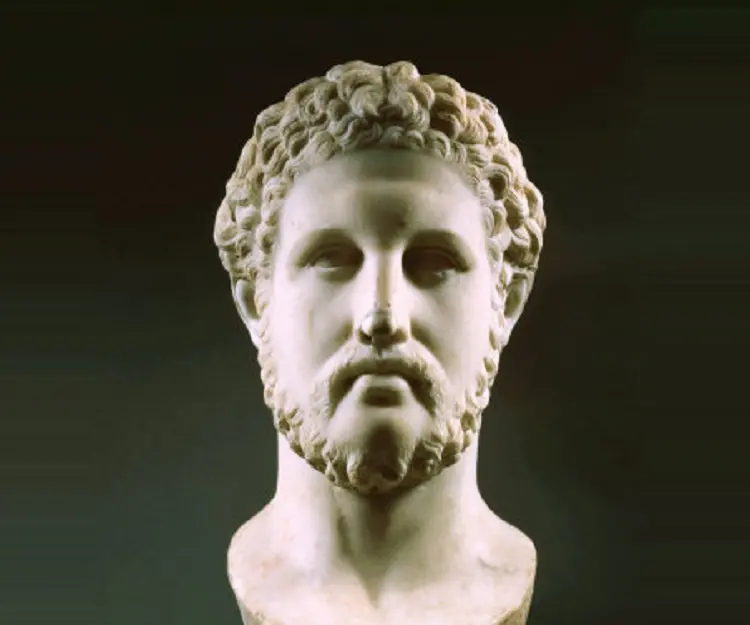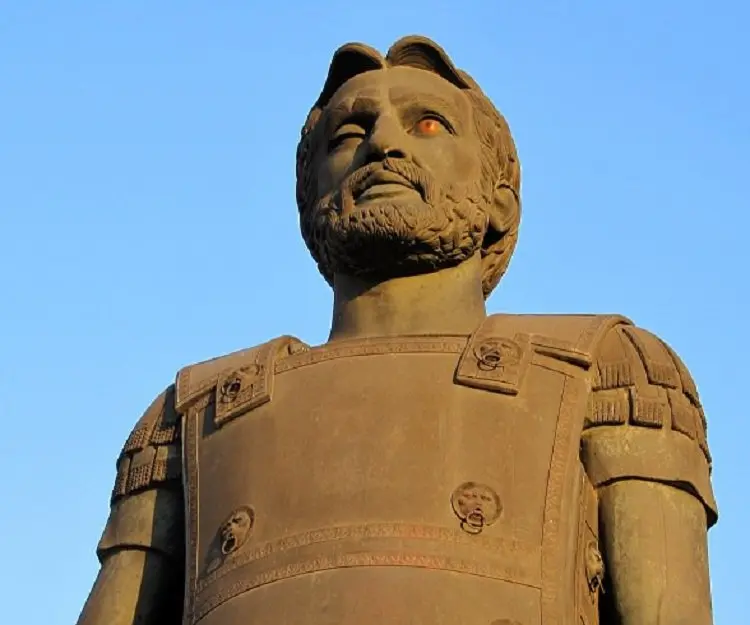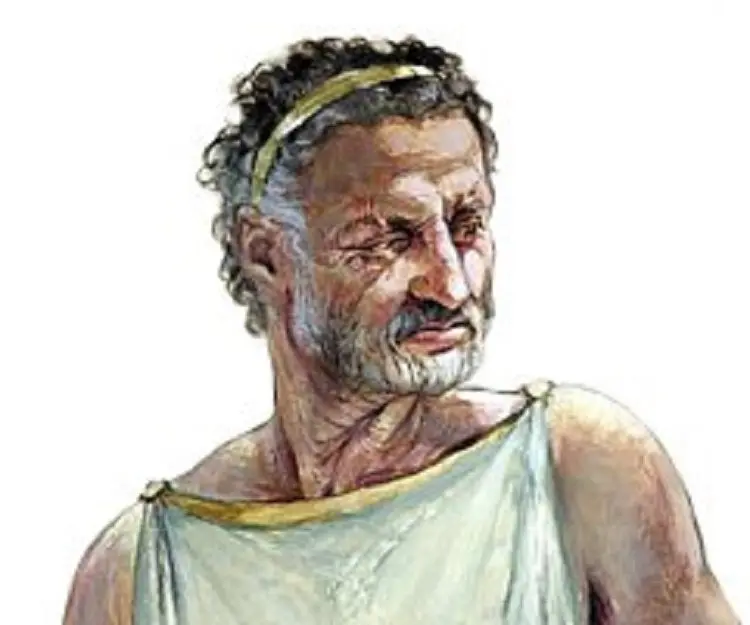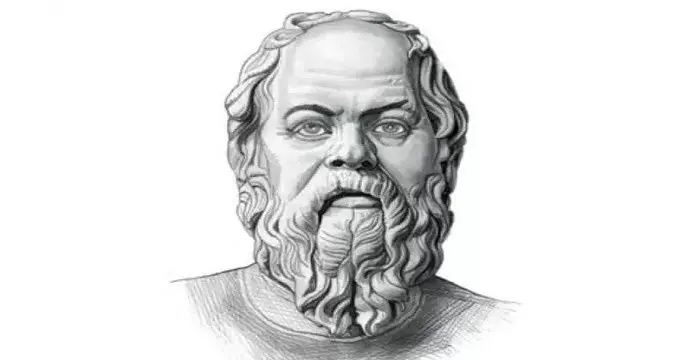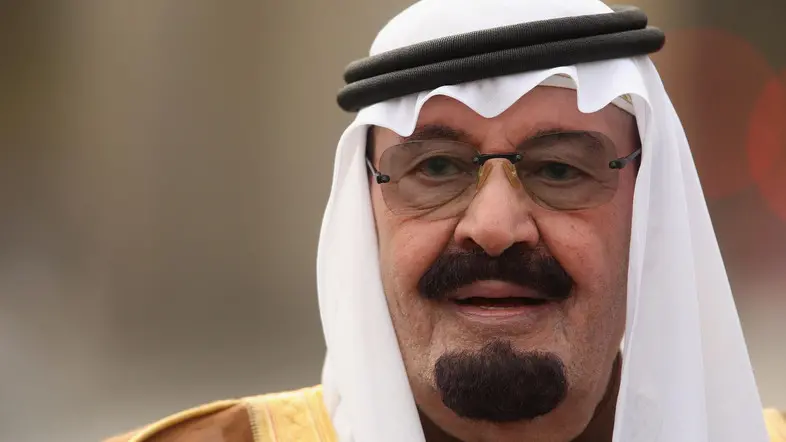
Philip II of Macedon - Kings, Career and Life
Philip II of Macedon's Personal Details
Philip II of Macedon was a king who ruled the Ancient Greek kingdom of Macedon from 359 to 336 B.C
| Information | Detail |
|---|---|
| Birthday | 382 BC |
| Nationality | Greek |
| Famous | Historical Personalities, Emperors & Kings, Emperors, Greek Men, King of Ancient Greek Kingdom of Macedon, Kings |
| Childrens | Alexander the Great |
| Birth Place | Pella, Greece |
| Gender | Male |
| Father | Amyntas III |
| Mother | Eurydice I |
| Born in | Pella, Greece |
| Famous as | King of Ancient Greek Kingdom of Macedon |
| Died at Age | 46 |
// Famous Emperors
Sundiata Keita
Sundiata Keita was the founder of the Mali Empire in West Africa. This biography profiles his childhood, early life, struggles, founding of empire, rule, administration, achievements and also gives some fun facts.
Ashoka
Ashoka was the third emperor of the Mauryan Dynasty and ruled almost the entire Indian subcontinent. This biography profiles his childhood, life, reign, achievements and timeline
Murad IV
Murad IV was one of the mighty Sultans in the history of the Ottoman Empire. This biography profiles his childhood, family, accession, rule, administration and timeline.
Philip II of Macedon's photo
Who is Philip II of Macedon?
Philip II of Macedon was a king who ruled the Ancient Greek kingdom of Macedon from 359 to 336 B.C. He is often remembered as father of Alexander the Great who became his successor after his assassination in 336 B.C. Philip II was a proficient king as well as an excellent military commander. During his youth, Philip was taken to Thebes where he was held a captive. Even in his captivity, Philip learned military and diplomatic strategies from Epaminondas. When he ascended to the Macedonian throne, the country’s economy was suffering and the nation was on the verge of collapse. Despite the pressures faced by the new king, he put his diplomatic skills to use and succeeded in defeating his enemies and obstacles. Philip attacked and captured the Greek cities of Potidaea, Pydna and Methone. He had defeated many of his enemies in northern Greece by 352 B.C., but failed to capture the pass of Thermopylae as it was guarded by the Greek forces of Achaeans, Spartans, and Athenians. Philip was assassinated in 336 B.C. at the ancient capital of the kingdom of Macedon. The reasons behind his murder are difficult to comprehend since there are many theories surrounding his assassination.
Childhood & Early Life
Philip II was born in 382 B.C. to King Amyntas III and his wife Eurydice I. He was their youngest son and had two elder brothers, Alexander II and Perdiccas III.
When Philip’s brother Alexander II took the throne, Philip was held a hostage in Thebes. During his time in captivity, Philip learned about different military strategies from Epaminondas, who was a great general of his era.
Accession & Reign
After the deaths of his elder brothers, King Alexander II and Perdiccas III, Philip took over the throne in 359 B.C. At first, he was appointed regent for his brother Perdiccas’ son, Amyntas IV, but later on, Philip succeeded in taking over the kingdom for himself.
Following the death of his brother King Perdiccas, Philip had to deal with the defeat against the Illyrians who had not only killed his brother, but had also worsened the economic and military situation of his country.
In 358 B.C., Philip and his army invaded Paeonia and then Illyria, acquiring lost territories of Macedon. Philip’s army was powerful and equipped with sarissa, a pike which had greater reach than Greek weapons.
In order to strengthen his relations with the Illyrians, Philip married princess Audata who was great-granddaughter of the Illyrian king. In 357 B.C., he conquered Amphipolis. Following this, he tasted victory for over two decades in the region.
In 356 B.C., Philip captured the northern Greek cities of Potidaea and Pydna. In the same year, he became involved in the Third Sacred War. Philip also helped the combined forces of Macedonian army and Thessalian League crush the Phocians and their commander in the Battle of Crocus Field in 352 B.C.
He captured the city of Crenides and renamed it ‘Philippi’ in 356 B.C. He held control over the mines of the area which produced gold and later used the gold for his campaigns.
Philip led battles in Methone in 354 B.C. and in Olynthus on the Chalcidice peninsula in 348 B.C. During these battles, he was seriously injured leaving some permanent scars on his face and body – a lost eye, a broken shoulder, and a crippled leg.
With his power residing in most of the Greek cities, Philip sent a threatening message to the Spartans warning them of the perils if they failed to surrender before him. But the Spartans further challenged him and Philip decided to leave Sparta alone.
Philip was injured and sustained a wound on his right leg when he led a campaign against the Ardiaioi in 345 B.C.
He conducted a military expedition in 342 B.C. against the Scythians and conquered the Thracian settlement Eumolpia and renamed it by giving his name ‘Philippopolis’.
In 340 B.C., Philip led two sieges. One of them was the siege of Perinthus and the other one was of the city of Byzantium. However both the sieges were unsuccessful due to which his influence over Greece was compromised.
In 338 B.C., he came back to power once again by defeating an alliance of Thebans and Athenians at the Battle of Chaeronea. In addition he destroyed Amfissa, a small Greek town, expelling large parts of its population.
Major Works
When Philip inherited Macedon after his brother’s death, it was on the brink of collapse. It was a weak, backward country with an ineffective, undisciplined army. It was Philip who used his military skills and disciplined the army forces which eventually controlled the territories around Macedon and conquered most of the Greece.
In 337 B.C., Philip created a federation known as the League of Corinth wherein all the members agreed never to wage a war on each other. Henceforth, Philip was elected as the leader of the army for the attack on the Persian Empire. It was during this venture in 336 B.C. that Philip was assassinated and was succeeded by his son Alexander.
Personal Life
Philip II of Macedon formed many alliances with the other powerful kingdoms not just through his military skills but also through a number of marriages. His first wife was the Illyrian princess Audata who helped him in forming an alliance with the Illyrians.
His second wife was Phila, the princess of the Macedonian canton of Elimeia. His most memorable wife was the princess Olympias of the country of Epirus who gave him his successor, Alexander.
Philip also married Cleopatra, daughter of Hippostratus and renamed her Cleopatra Eurydice of Macedon and had two children with her.
Assassination
Philip II of Macedon was assassinated in the spring of 336 B.C., the year he began his invasion of Persia. During the marriage celebrations of Philip’s daughter, Cleopatra of Macedon, and Alexander I of Epirus, Philip was killed by Pausanias of Orestis, who was one of his bodyguards.
After murdering Philip with a dagger, Pausanias tried to escape but was caught by the bodyguards and eventually killed. Alexander the Great took over his father’s throne and went on to invade the Achaemenid Empire.
Legacy
The cult statue of Philip had been erected in the heroon at Vergina in Macedon where the family of Philip is worshipped.
The Macedonians honoured Philip and bestowed upon him different forms of recognition. At Eresos, an altar had been built for Zeus Philippeious; his statue was placed in the temple of Artemis; and at Olympia a memorial ‘Philippeion’ was made in 338 B.C.
Hollywood has portrayed Philip in a few of the period dramas like ‘Alexander the Great’ and ‘Alexander’. Philip also appears in some video games like ‘Hegemony: Philip of Macedon’ and ‘Rome: Total War: Alexander’.
Filippos Veria which is a successful handball team of Greece exhibits Philip’s name in their emblem. There is a sporting ground in Skopje named ‘Philip II Arena’.
Trivia
Philip’s horse won an event at the Olympics in 356 B.C. He was also given a silver coin to celebrate his feat.
The king had sent an ominous message to the Spartans in a letter talking about the number of things he would do if he won a war against them. The Spartans replied back to Philip bluntly with just one word ‘if’ mocking his threats.
// Famous Greek Men
Solon
Solon was an Athenian lawmaker, poet and politician. He is considered as one of the ‘Seven Wise Men’ in Greek culture. This biography provides detailed information about his childhood, life, career, works, achievements and timeline.
Pericles
Pericles was an important Greek statesman, orator, patron of the arts, politician, and general of Athens who lived from 495–429 B.C. Check out this biography to know about his childhood, life, achievements, works & timeline.
Socrates
Socrates was one of the most influential Greek philosophers of the ancient era. Check out this biography to know about his childhood, family life, achievements and fun facts about him.
Philip II of Macedon biography timelines
- // 382 BCPhilip II was born in 382 B.C. to King Amyntas III and his wife Eurydice I. He was their youngest son and had two elder brothers, Alexander II and Perdiccas III.
- // 359 BCAfter the deaths of his elder brothers, King Alexander II and Perdiccas III, Philip took over the throne in 359 B.C. At first, he was appointed regent for his brother Perdiccas’ son, Amyntas IV, but later on, Philip succeeded in taking over the kingdom for himself.
- // 358 BCIn 358 B.C., Philip and his army invaded Paeonia and then Illyria, acquiring lost territories of Macedon. Philip’s army was powerful and equipped with sarissa, a pike which had greater reach than Greek weapons.
- // 357 BCIn order to strengthen his relations with the Illyrians, Philip married princess Audata who was great-granddaughter of the Illyrian king. In 357 B.C., he conquered Amphipolis. Following this, he tasted victory for over two decades in the region.
- // 356 BCIn 356 B.C., Philip captured the northern Greek cities of Potidaea and Pydna. In the same year, he became involved in the Third Sacred War. Philip also helped the combined forces of Macedonian army and Thessalian League crush the Phocians and their commander in the Battle of Crocus Field in 352 B.C.
- // 356 BCPhilip’s horse won an event at the Olympics in 356 B.C. He was also given a silver coin to celebrate his feat.
- // 348 BCPhilip led battles in Methone in 354 B.C. and in Olynthus on the Chalcidice peninsula in 348 B.C. During these battles, he was seriously injured leaving some permanent scars on his face and body – a lost eye, a broken shoulder, and a crippled leg.
- // 345 BCPhilip was injured and sustained a wound on his right leg when he led a campaign against the Ardiaioi in 345 B.C.
- // 342 BCHe conducted a military expedition in 342 B.C. against the Scythians and conquered the Thracian settlement Eumolpia and renamed it by giving his name ‘Philippopolis’.
- // 340 BCIn 340 B.C., Philip led two sieges. One of them was the siege of Perinthus and the other one was of the city of Byzantium. However both the sieges were unsuccessful due to which his influence over Greece was compromised.
- // 338 BCIn 338 B.C., he came back to power once again by defeating an alliance of Thebans and Athenians at the Battle of Chaeronea. In addition he destroyed Amfissa, a small Greek town, expelling large parts of its population.
- // 338 BCThe Macedonians honoured Philip and bestowed upon him different forms of recognition. At Eresos, an altar had been built for Zeus Philippeious; his statue was placed in the temple of Artemis; and at Olympia a memorial ‘Philippeion’ was made in 338 B.C.
- // 337 BC To 336 BCIn 337 B.C., Philip created a federation known as the League of Corinth wherein all the members agreed never to wage a war on each other. Henceforth, Philip was elected as the leader of the army for the attack on the Persian Empire. It was during this venture in 336 B.C. that Philip was assassinated and was succeeded by his son Alexander.
- // 336 BCPhilip II of Macedon was assassinated in the spring of 336 B.C., the year he began his invasion of Persia. During the marriage celebrations of Philip’s daughter, Cleopatra of Macedon, and Alexander I of Epirus, Philip was killed by Pausanias of Orestis, who was one of his bodyguards.
// Famous Kings
Sundiata Keita
Sundiata Keita was the founder of the Mali Empire in West Africa. This biography profiles his childhood, early life, struggles, founding of empire, rule, administration, achievements and also gives some fun facts.
Ashoka
Ashoka was the third emperor of the Mauryan Dynasty and ruled almost the entire Indian subcontinent. This biography profiles his childhood, life, reign, achievements and timeline
Murad IV
Murad IV was one of the mighty Sultans in the history of the Ottoman Empire. This biography profiles his childhood, family, accession, rule, administration and timeline.
Xerxes I
Xerxes I (Xerxes the Great) was the fourth and the most famous king of the Archaemenid dynasty of Persia. This biography profiles his childhood, family, personal life, life history, achievements, campaigns, administration, death and other facts.
Sargon of Akkad
Sargon of Akkad, also called ‘Sargon the Great’, ‘Sarru-Kan’ and ‘Shar-Gani-Sharri’, was the founder and first king of the Akkadian Empire. This biography profiles his childhood, life, rule, administration, timeline, and gives some fun facts.
Abdullah of Saudi Arabia
Abdullah bin Abdulaziz Al Saud was the King of Saudi Arabia from 2005 to 2015 and the third wealthiest head of state in the world. Find more facts about his life, childhood and timeline.
Philip II of Macedon's FAQ
When was Philip II of Macedon died?
Philip II of Macedon was died at 2020-04-14
Which age was Philip II of Macedon died?
Philip II of Macedon was died at age 46
Where is Philip II of Macedon's birth place?
Philip II of Macedon was born in Pella, Greece
What is Philip II of Macedon nationalities?
Philip II of Macedon's nationalities is Greek
Who is Philip II of Macedon childrens?
Philip II of Macedon's childrens is Alexander the Great
Who is Philip II of Macedon's father?
Philip II of Macedon's father is Amyntas III
Who is Philip II of Macedon's mother?
Philip II of Macedon's mother is Eurydice I
How famous is Philip II of Macedon?
Philip II of Macedon is famouse as King of Ancient Greek Kingdom of Macedon



